Axminster’s #80 Cabinet Scraper-Uh Oh!
For more information on the #80 Scraper, see our beginner site Common Woodworking.
…How Could They Get It So Wrong?
Periodically we just get it wrong! Oh, Axminster, why did you stop so short for a ha’p’orth of tar? No instructions on the scraper set up, wrong cutting blade bevel angle, single cutting edge not two? The box claims, “Superior Trade Quality” and then “Woodworking Planes” and the scraper is very much not at all a plane of any type, not related at all to the plane category of tools and should never be confused as such. Even though the header on their webpage for this tool says…
Axminster Rider No. 80 Scraper Plane—
…if you are new to woodworking, THIS IS NOT A PLANE!
What to do? I decided not to leave it alone and allow confusion to set in for the generations new to woodworking so I’ll correct it here because it’s often true that manufacturers won’t get to it or won’t get to it soon enough. I added a link to this blog post on their website review section too, so that there will be no confusion as the staff at Axminster and their demonstrators obviously know nothing about this tool.
Here’s a video to watch about the cabinet scraper AFTER I fettled it to get the flawed concepts out. Please read the full blog though before you purchase.
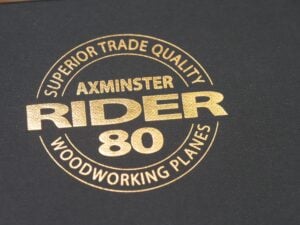
Well, so much to say!
So what did go wrong? Well, we know that we can get things wrong, but this comprises a series of perhaps smaller issues leading to the bigger issue of poor information/communication and product quality control. It shows how little they know about 80 cabinet scrapers or that they handed it off to the manufacturers in Asia or that they just don’t care. What’s obvious is that customer/user care is at am all time low. The flaws with their #80 scraper would seriously jeopardise any new woodworkers chances of success with the tool and would totally confuse them. Perhaps they should check their product control department and then too involve their research department (if they have one) a little more. This is surprising on one hand because they have been the industry suppliers in the UK for so long, but then on the other hand they are not in any way the hand tool experts they might claim to be as is the case with so many hand tool catalogue supply companies I suppose.
Firstly, I assume Rider to be an Axminster brand that Axminster UK owns because they are the only outfit with sales outlets for Rider hand tools. I believe the Rider plane range is either made by or follows the same knock-off manufacturer as the Quangsheng range except that the Rider plane models copy the Irwin Record model lever cap, as the standard lever cap iron has been replaced with a knurled setting screw instead of the lever cap iron. That said, forget the scraper being a plane or in their Rider plane category because they should not knowingly recategorise tools and create confusion by naming a #80 scraper as a plane. But I am willing to put this down to ignorance rather than an intensional step to mislead.
At first glance the Rider #80 looks identical to any of the #80s ever made, but it may look better as far as finish quality and specs go. I must say that their packaging has to be near the very best yet! No corrugated cardboard here. And if you do like or have need of stowing tools in their boxes and with padding too you need look no further on that front. The one we received came in a black coloured box lined with shock absorbing foam cushioning on all six sides. I find boxes irritating as I like all of my tools near to and ready to go, but I do understand the need for boxes if the tools are not in full time use. I use mine every day all day, whereas most people don’t and taking precautions is important. Of course we are looking a bit deeper than the box, aren’t we?
So just where did Axminster go wrong?
Apart from the misnomer as a plane, when I looked at the Rider pictures it wasn’t so much the overall appearance of the box, the name or the tool itself that grabbed my attention but seeing what looked like a thicker cutting iron. I had never seen a thick iron on a scraper anywhere so I wanted to see how well a thicker iron performed over the standard thinner one. Would the thick iron be difficult to flex-bend to task as this is what the tool depends on for creating and adjusting depth of cut. As I pulled the scraper from the box my first impression was that it was a tool of quality. I had read two reviews on the Axminster site referencing the tool, one fairly good and the other fairly bad. Neither of them mentioned the real issues that intrigued me so.
OK! The boxing up impressed me, I’ll admit that, but when I opened it up there was about zero information on the tool at all, no instructions, no description of what I’d bought. So I had to ask myself why was the cutting iron so thick?
Then I asked myself why was the blade made up of two alloy types with one being laminated to the other. there was no mention of this anywhere on their site or in the booklet that came with the tool. Why was the main body of steel hardened so hard a Bahco file just glided off it but the laminated cutting edge so much softer. It had to be some kind of mistake!!! You see if the cutting edge steel of the blade is softer than the main body steel then filing the bevel becomes an impossible task but the #80 scraper relies on draw filing with a flat file for establishing the bevel and then sharpening and restoring its cutting edge ready for turning. In other words, the bevel of the main body steel prevents the file from removing the existing developed cutting burr and the ability of developing any new bevel that creates the turned cutting edges. Simply put, it is a very flawed concept. 1. The laminated two-steel type blade has steel that’s too hard to sharpen with a file and because one is harder than the other the bevel cannot be sharpened with just a file makig it expensive to sharpen using diamond plates.
Number 2 flaw: The cutting bevel is ground at the standard 25-degree angle as is standard for the ground or primary bevel for all edge cutting tools like planes, spokeshaves, chisels, drawknives and such. Plane blade bevels have nothing near the concept of the scraper blade because in no way is the #80 cabinet scraper a plane! As any woodworking enthusiast knows, the bevel on #80 scrapers is always ground and honed at as near to 45# as possible because it is not intended to push the tool plane like with the bevel cutting edge used in a slicing cut but the cutting edge is a highly refined turned edge that in effect forms a long and turned hook. Effectively turning a 30 degree hooked edge means the edge fractures and breaks off under the pressures of the work because the bevel angle creates to thin a hooked edge. Three or four strokes and you have lost the edge.
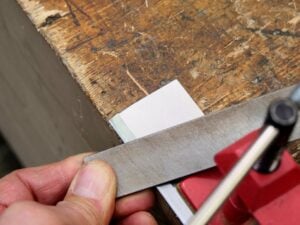
False concept number 3: If the whole blade was made from just appropriate O1 tool steel it would have been just perfect. I did not understand the hardened body steel and the laminated edge. It was totally unnecessary and renders the simplicity of conventional sharpening to be a very difficult task being possible only with power equipment or diamonds.
What I did like about the Rider version was that you could load the blade in a honing guide for a fully honed out flaw-free 45-degree bevel, which you cannot do with conventional thinner blade because they bend when pressure is applied to the sides of the iron via the blade holding setscrew for holding the blade securely. The thicker iron keeps the blade straight so the bevelled cutting edge is straight.
I liked the price. Not expensive for this quality of manufacturing. £28 is about just slightly over one third the Veritas scraper price. The thing that frustrated me the most was that new woodworkers would not have the working knowledge to see the problems straight off. They would most likely see themselves as the problem or not realise they could make it work. They might also think that the tool generally, i.e. the #80 is just not good tool. With no in-package information available with the tool it is understandable they would see themselves as the problem. The thickness of the steel on Record and Stnley as standard is around the 1mm plus side. The Rider is an impressively thicker iron at 2.87mm.
The image below shows my working with the tool on mesquite but I tested it on beech, poplar, oak and it scraped well. Mesquite is a hardwood and a hard, dense-grained wood that’s almost twice as hard as oak. Poplar on the other hand can be difficult to scrape.
On a more positive note
The component parts to the tool are made from good materials. Whereas the sole is not dead flat, I have never found that to be a real issue as long as it’s close enough as the tool cannot produce a truly flat surface because the blade is bent or curved for it to be functional and adjustable.
These two images show how the retaining bar bends away from the blade when the two thumbscrews are tightened. It’s not much but it allows the blade to bend when the adjuster thumbscrew applied pressure to the other side of the blade, bending it against the retaining bar. When the blade is locked in place and the thumb-screw adjuster is tweaked to adjust for depth of cut both retainer bar and blade bend very nicely together at the same time.
I will test the tool out over the next few weeks but I did get it sharp and I liked the way it performed after corrective work.
1: You can fix the issue of too hard a steel by using diamond plates to abrade the bevel, but that makes the price overly expensive if you don’t actually own diamond plates. Generally the very best and least expensive tool used for this is a decent 10″ Bahco flat file. £10 for ten years of scraper sharpening.
2: You could regrind the whole bevel to 45-degrees on an electric grinder but this is a sad apology for what should have been done right. But it will be fine to make a 45-degree bevel to a narrower edge say 2-3mm wide and then, as you resharpen, get it down with each successive sharpening you do.
Conclusion: What I liked about the scraper was that at first glance the quality was high. Brass knurled nuts, body casting was good too, smooth and consistent, nicely painted and such. The retaining bar was very much more than adequate, so my overall feeling was good, very good.
It’s such a shame to see what happened here happen. I was sad to have to give a negative review to what should be potentially a good and improved version of the standard #80 cabinet scraper but I cannot recommend buying the scraper with such poor attention to the details that really matter. Until Axminster takes care of its issues I’ve outlined clearly above you should consider whether buying it anyway will help them come to terms with the issues. Of course if you already have a diamond plate for honing it you can correct the bevel issue. You might even consider making your own cutting iron from O1 or A2 steel but that’s more work than seems practical.
It saddens me that any new woodworker would buy it and not know exactly what the problems are and that it wasn’t them that was the problem but the tools. Amazing that Axminster probably knows nothing of these issues as yet. Hopefully they’ll hop to it quickly and rectify the problems by automatically recalling or issuing replacement cutting irons to those who’ve bought it.
I ordered a Veritas scraper blade as a replacement and it fits and works fine so perhaps a poor reconciliation is to not use the Rider blade and buy the £11 alternative which brigs the overall cost to around £40.



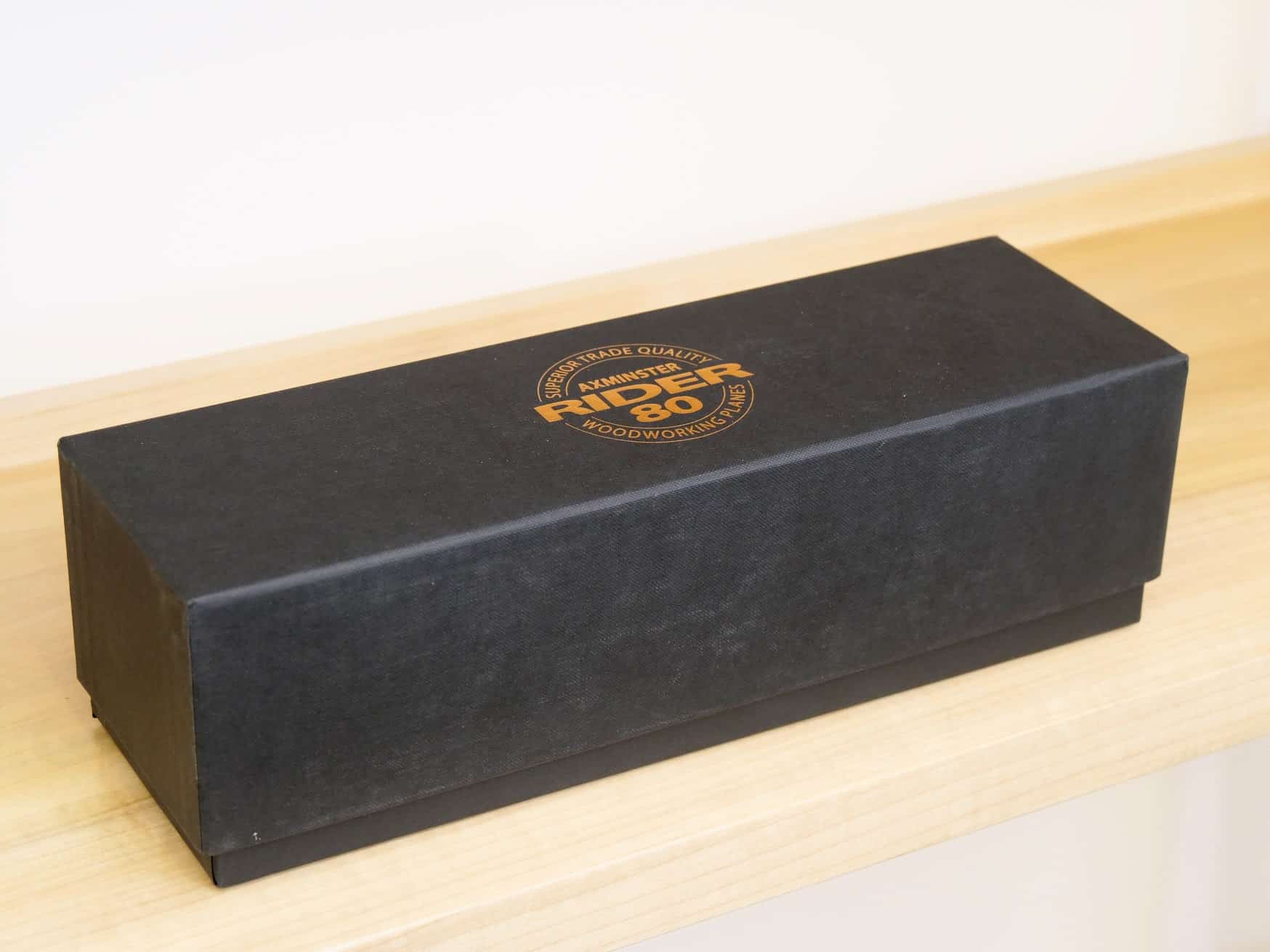
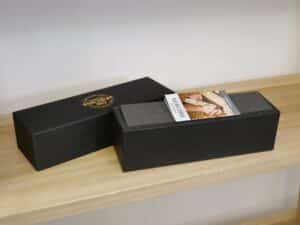
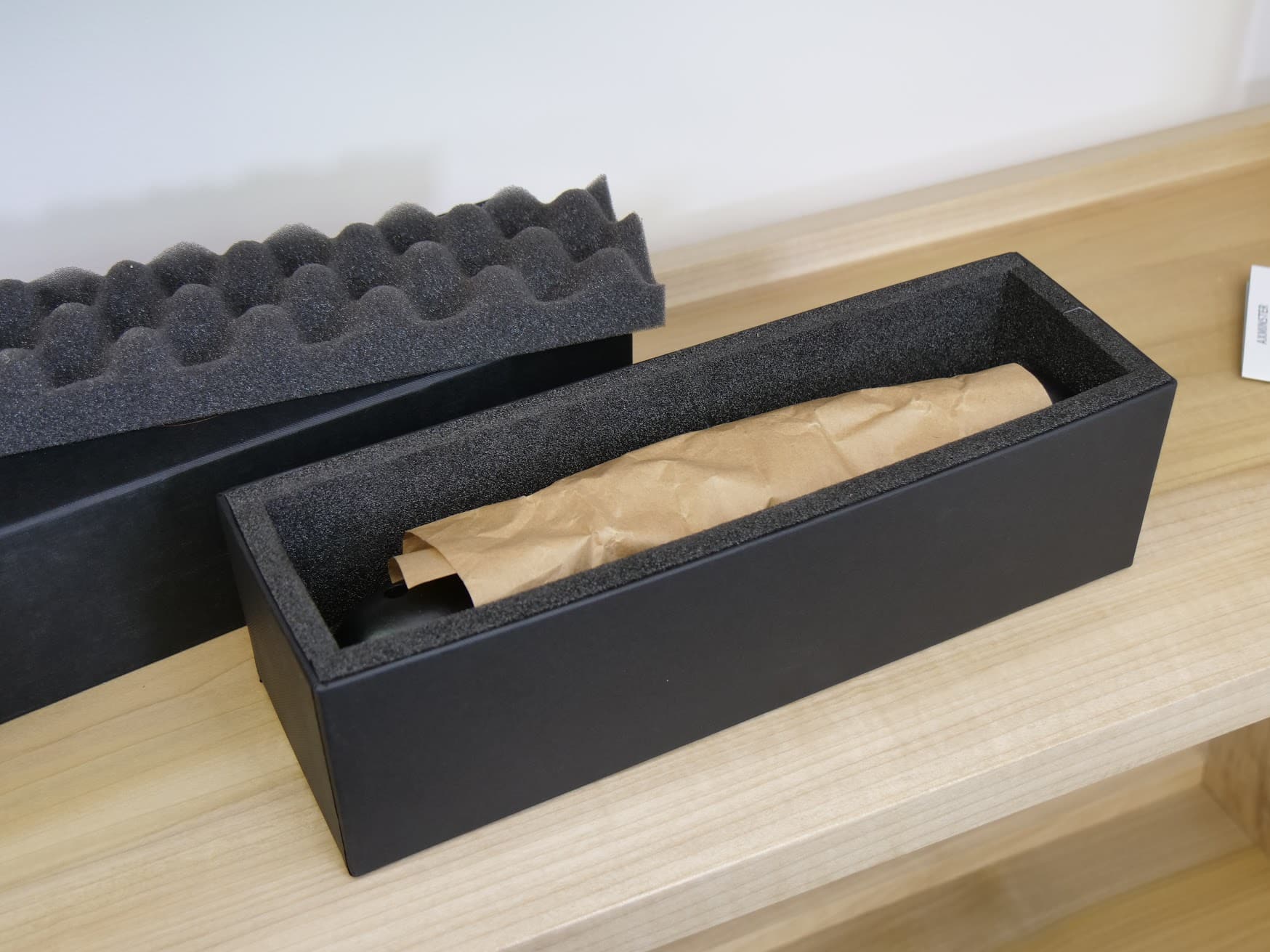
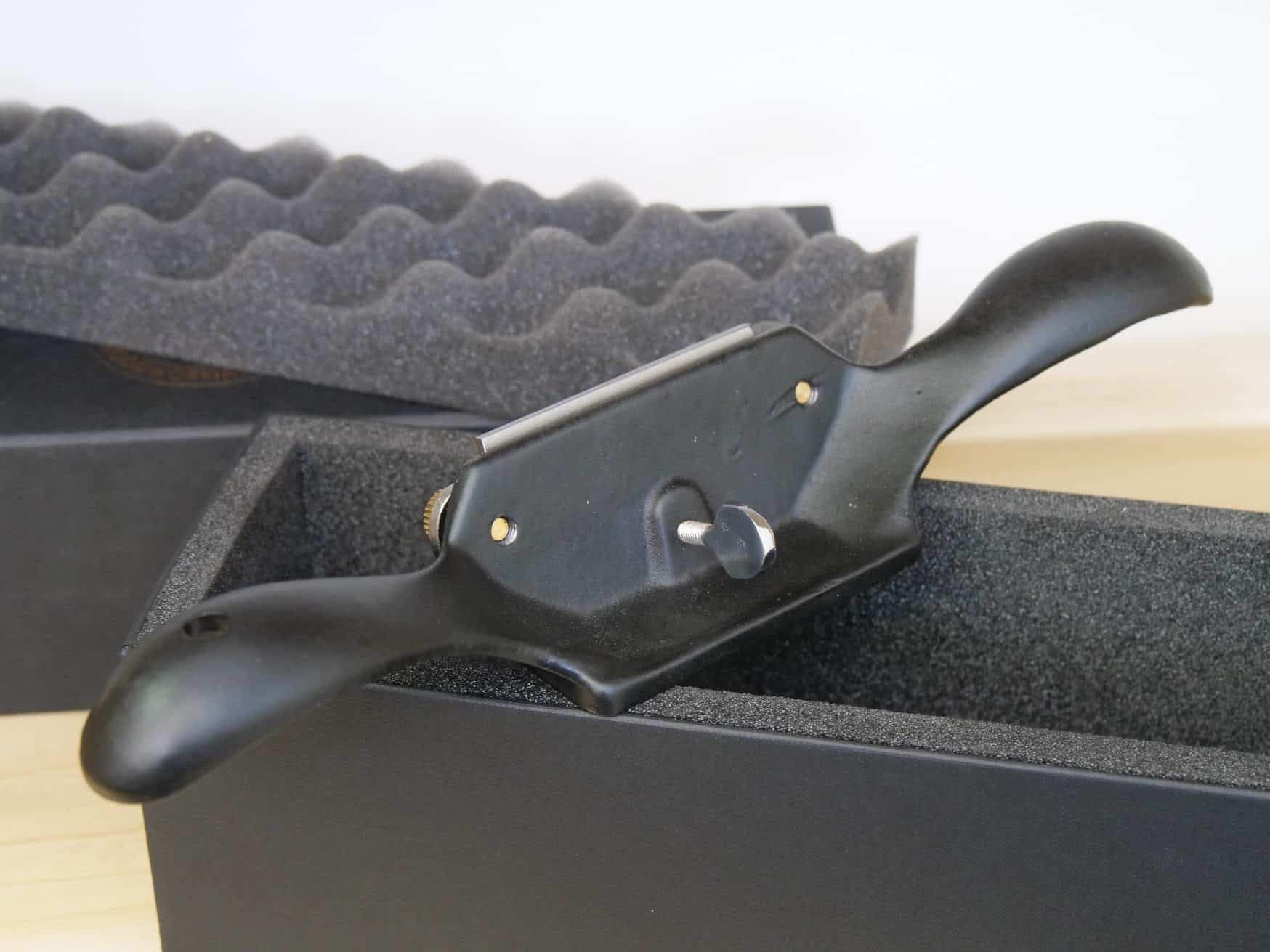
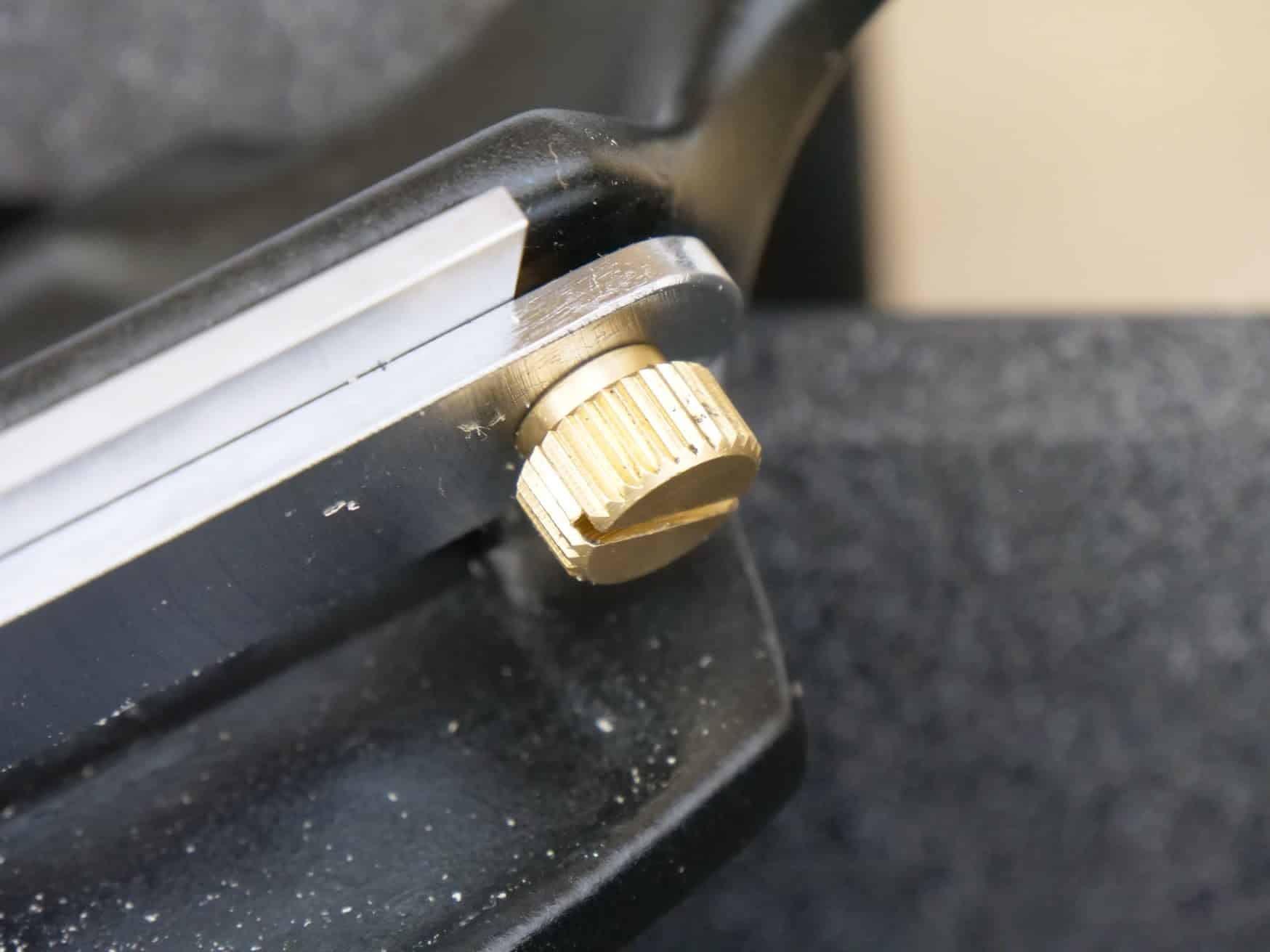

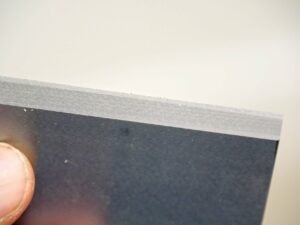

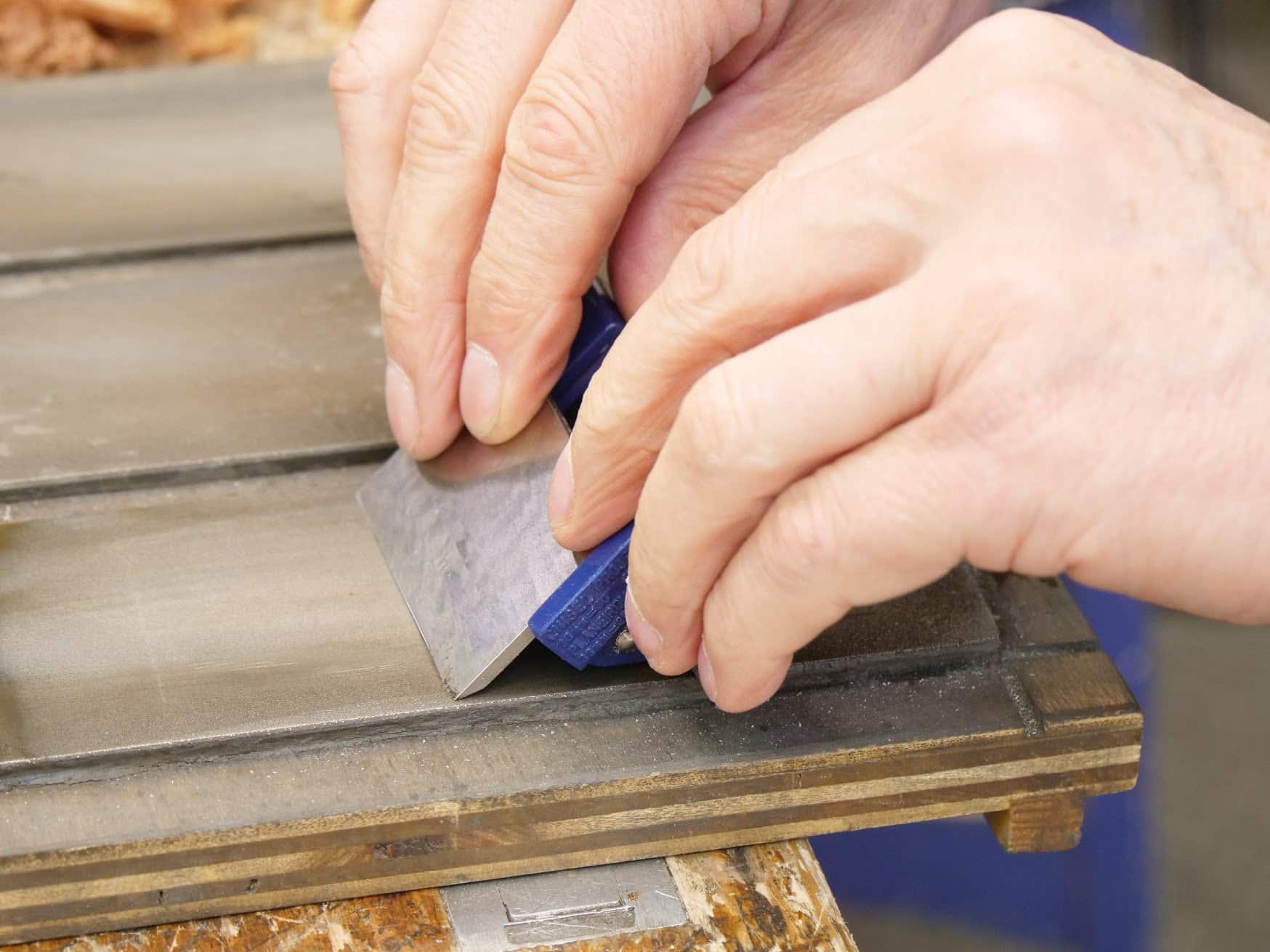
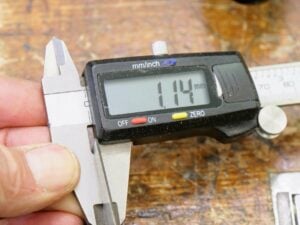
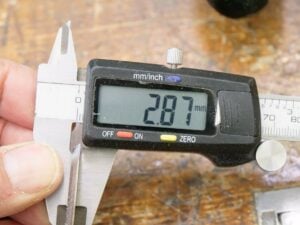

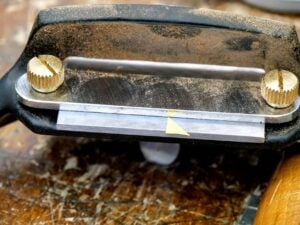
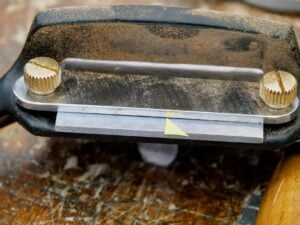
I have found Axminster Tools to supply the better known and established tool makes e.g. Veritas (Lee Valley) at competitive prices and at reasonable shipping costs (UK to Ireland). Where these tools are concerned, they have been excellent in use.
However where I have purchased a non branded or their own brand item, the quality is not so good or their description in the catalogue/on-line is inaccurate. I purchased what was described as a “stainless steel” angle checking tool. A simple credit card size piece of metal with accurate angles cut (actually stamped out) into it. Each had an angle label (e.g. 30 degrees, 45 degrees etc) printed adjacent to its cut-out. Problem 1, the metal was not what I would describe as stainless steel. If it is, then it must be of a very low quality of stainless as it sticks to my weak test magnet very well! Good quality stainless steel doesn’t stick to a magnet or if of a low quality it sticks weakly. Fault number 2, the printing on the metal is not very robust. It’s either silk screened or laser printed but the printing is already wearing off and I’ve hardly used the thing.
As it happens I had a No80 cabinet scraper on my wish list and I am happy to now avoid the Axminsters Rider version thanks to your timely warning and review. Thank you Paul. I do hope the folks at Axminster respond and respond in a positive way to your poor review. Looks like the supplied blade needs to be radically revisited by Axminster. How difficult or more expensive would it have been to include at least a basic illustrated guide/instruction sheet? One wonders if other “Rider” products are like their No.80 scraper (plane?!).
I don’t think it’s cost but knowledge. If you don’t know how the tool functions to the point of not making it properly, then you certainly don’t have the understanding to explain how it works.
Side comment: There are two general categories of stainless steel, Martensitic (400 series) and austenetic (300 series). 400 series is magnetic to varying degrees and 300 is not. They each have different purposes, strength and weaknesses. While there are poor material lots of stainless (like any other material), the degree of magnetisim isn’t a valid measure (unless it is identified as 300 series).
Thanks for this Ronald. V helpful.
Even the austenitic stainless steels (such as 302, 304, 316, or screws/bolts made of A2 or A4) do become magnetic after cold working. This is, IIRC, because of the inherent microstructural instability of the austenite in the stainless steel, which, after cold working (putting in ‘extra’ energy into the crystal lattice) converts/flips to martensite, which is (ferro-)magnetic.
In short: cold-worked austenitic stainless steels (300-series) can definitely become magnetic as well.
The 400-series martensitic stainless steels are, as far as I know, always magnetic. Kitchen cutlery is often made of these stainless steels and is definitely magnetic. Just as my little Swiss army knife: definitely magnetic and definitely stainless steel.
The magnet-test is nearly meaningless when it comes to testing/identifying stainless steel. I still snicker when I recall how my father used to discern AISI 304 from 316 (or so he thought….) with a magnet due to a (perceived) small difference in attraction…. Doesn’t work that way, I know now. Give either steel a good whack with a hammer (or bend a strip of 304/316 at right angles) and test with a magnet: the entire strip will be non-magnetic, except for the sharp bend, which has now magically become magnetic due to the cold-working (bending)
400 series stainless steel is indeed magnetic. 420 and 440 specifically are tool steels, very high quality, hardenable and used in the tool and die industry. Some, though not all of the non-magnetic stainless steels are sometimes called “soft stainless”.
The cutting edge should be on the hard metal side not the soft one. So it seems the bevel should have been grinded on the other face.
When grinded on the other face, I don’t know if the steel is so hard that it would prevent turning the burr or mare the burnisher.
Why make the blade extra thick if it is supposed to be bent?
The specifications given to the subcontractor might not have been precise enough (what should be soft, on which side to grind, how hard the hard side should be); and/or there might not have been an adequate quality control from the main contractor.
Lie-Nielsen also uses a thick blade and it’s A-2 on top of that. They aren’t #80’s but definitely a departure from original Stanleys.
For those stuck with Rider 80’s, perhaps a Veritas blade would remedy the difficulties pointed out.
I don’t think that will be necessary for those who do have a diamond plate. You might better consider a Veritas replacement blade for it as these are very nice blades and the cost is much more reasonable at £11. The issue then though is why not just buy the Veritas scraper at £40? Good to go from the box then.
Lie Nielsen blades did seem more excessively high in price at almost £40 if indeed these are replacements for #80 types. I couldn’t advise anyone to pay so high a price for what is basically a piece of treated steel. Of course one could also make their own for £3 worth of O1. Axminster offers replacement blades for £6 also which I will test out today. I am hoping that Axminster Rider will do the right and honourable thing and dish out correctly made cutting irons as replacements to those who bought them.
Thanks for testing this one! I was close to ordering one a while back, but I was in too much of a doubt after getting a badly machined square from Ax (I did get my money back). Hence, I’m still looking for an affordable cabinet scraper.
Is it possible to replace the blade with a thinner one without modifications?
Yes, a conventional Record or Stanley will work fine. Also, you might consider a Veritas replacement blade for it as these are very nice blades and the cost is reasonable at £11. The issue then is why not just buy the Veritas scraper at £74. Good to go from the box then.
I just ordered a Veritas #80 scraper. Every tool I’ve bought from them has been pretty good. I especially like their plow plane.
I’d like to get your thought on the scraper “planes” like the Stanley 112, 212, 85.
If I had to guess I think you would consider them fairly useless given how effective the #80 is. I have a vintage 112 and the LN versions of the 212 and 85.
I’ve been using toothed blades in them followed by card scrapers to good effect on woods that just won’t plane (hand or machine). It would be nice to see how to properly set up a 112. Card scrapers work great but for large areas my hands cramp up. I’m sure the #80 will help but I would think that the 112 would be easier on the hands for long sessions. The problem is that the setup on the 112 is fussy. I follow your directions on sharpening the scraper blade and I can even take the scraper blade out and use it like a stiff card scraper. Any tips would be appreciated.
Because the #80 is so effective and scraper planes can indeed offer nothing much more to the work, I generally find myself reluctant to suggest them as an alternative basing it on the maxim, “If it ain’t broke, don’t fix it!” The #80 is indeed highly efficient and more economical with no real gain achieved by the alternative.
I understand that hand and other cramping is often caused by low potassium or magnesium levels. You might try alfalfa capsules to counter lower levels as a capsule supplement contains high amounts of magnesium and other minerals and nutrients such as calcium and carotene. The right proprietary brands can also give you protein, vitamin K and vitamin C, vitamin E. A good spoonful of raw black molasses is good for magnesium too, avocados, and apricots these are rich sources to add into your diet.
just looked at prices on the Stanley #80 on ebay buy it now.
“very reasonable”, some have Sweetheart blades, many are in fantastic condition… love it.
i got one basically nothing, and it’s a pleasure; made me want to learn all about scrapers and related tools. fascinating.
hopefully the effect of someone writing about these (like routers) doesn’t make the prices go crazy – everyone, buy a used good Stanley #80 like your life depended on it. prices will skyrocket 😉
love the books and dvds and … keep it coming Paul 😀
They do go up after I blog on them. Go back five years and they mostly sold for peanuts; plough panes for £10, a good condition #4 Stanley or Record for as low as 99p once. Routers could be had for £10 and less and so it goes. I measure my success by prices on eBay and folks should remember that paying half a week’s wage for a good plane is not too much because when I was 15 a Stanley #4 cost me £3.50 and that was a week’s wage for me as a new apprentice. Admittedly tradesmen were earning £18 a 42 hour week (6 hours more than the UK today) and dreamed that one day they’d get £20 and a 40 hour-week.
It’s amazing (and very sad) that no one in this company knows how to use a tool like this. They literally don’t even know what they are doing for a living.
It’s a generational thing I experience in many places of business, education, healthcare, you name it. The older guys hang in in their positions, keep information they’ve gained through the decades to themselves and the next generation can’t move forward because they then threaten their turf. Then the youngest generation got some degree in business management and were told how brilliant they were and should move into marketing but without the practical knowledge of the previous generations. Oh well!
you hit the nail on the head Paul it the older guys keeping the info to them self so they think they wont loose their jobs but they will gain so much more by teaching it as then they become more valuable to an employer as they can teach the young guy coming in. shame but its the way of small minded people . i have met many of those in my work
Hi Paul,
I purchased this scraper in January 2016 – I emailed the company on the 19 Jan 2016
“Hi,
I recently purchased this scraper plane.
Sales Invoice 4031264
Your description of the Rider product range states that each tool is inspected by yourselves.
How then have you missed the fact that the blades are ground incorrectly?
The blade I received was ground to 25′.
No. 80 blades should be ground to 45′ from the factory.
Take a look at the blade for the veritas version of the No.80 — It does have the correct angle ground on it.
I embarrassed myself by recommending the Rider No 80 in the comments on Paul Seller’s Blog page, saying that the blade was correctly ground — I had to go back and make a correction and an apology
https://paulsellers.com/2016/01/why-45-degrees-on-cabinet-scraper-blades/?
I will have to file the blade to the correct angle before I use it.
Will you look into this and how you can stand over a product that has an inherent fault in manufacture?
I look forward to hearing from you,
Steve Hughes.”
I received this reply ——-
“Dear Mr Hughes
Thank you for your recent enquiry [ID#144779] dated 19/01/2016.
Firstly, please accept my sincerest apologies for the inconvenience this has caused. After looking into this further for you, I can confirm our blades are factory ground at 25 degrees, we then put the secondary bevel of 45 degrees on. Unfortunately, it does appear that the blade you have received has missed this process and as a gesture of goodwill we will supply a free of charge blade but regretfully, this will not be available until the end of the month. We appreciate your feedback and this has been passed to our Product Development Department.
If I can be of any further help or assistance, I look forward to hearing from you.
Kind regards
Amy Down
Customer Service”
Axminster have been aware of this issue for AT LEAST 2 Years and have not bothered to correct it. — shame on you Axminster.
(the ‘replacement blade’ was the 25′ grind with a tiny 45′ bevel added)
steve hughes
Wow.
I remember when these first came out,they released a video on YouTube on how to sharpen and use one
https://youtu.be/FZn4efYfveg
But all he does is sharpen the blade to an angle steeper than 45degs and that’s it,no turning of the edge or anything.
I felt like saying something on the comments section but who am i
Paul, thank you for this information. It is absolutely right that you should highlight the errors exhibited. Far from being annoyed at you, Axminster should be thanking you for showing that their product can/should be a good tool. They are a major outfit here in the UK and I have bought a number of items from them. There is an element of trust when patronising a company such as Axminster, and it would be excellent if they acknowledged the fault and rectified it. That would really give them some kudos. One of the best things they do, (in their Warrington store anyway) is provide a bench and wood thereby enabling you to try a tool out. You can read all the reviews in the world, there’s nothing like actually trying it for size.
I bought one of their Rider block planes a couple of years ago. With half an hour’s fettling it has become a great favourite of mine. Keep up the good work with regard to tool maintenance, I’ve benefited greatly from your tutorials on saw sharpening, and setting up wooden planes.
Thanks for the review. The suggestion for using a veritas blade is excellent, as it saves a lot of work in manually re-establishing a 45 degrees angle, etc. Buying the Rider scraper+veritas scraper blade costs about half of what the veritas scraper with blade included would cost.
Veritas also sells a scraper plane, which is a different item than their cabinet scraper – what is your take on that? Is that a true plane, or is that also a mis-named scraper? It uses a different blade than the cabinet scraper…
Your information to new woodworkers is invaluable. My restored #80 is one of my favorite tools that hangs close to my bench and is used frequently to remove mill marks and changing grain as well as many other issues.
When the most famous woodworker in the World disses your #80 and you refuse to address production, woe be on you. And you too Amy in Customer Service.
First, thank you Paul! Your knowledge and your willingness to teach others is priceless!
My question is, why is this considered a cabinet scraper? I would have thought that such tool is a flat spokeshave. My other question, why would you use this tool as opposed to using a plane? I have the thin, flexible cabinet scraper and a veritas holder. How would the use of either of them apply, when they are both considered cabinet scrapers? I appreciate your time and help!
Go have a dig through his blog on the number 80 he explains the differences. A spokeshave has a cutting edge like a plane iron and you adjust the depth of cut like a plane. A scraper has a completely different type of cutting edge where by using a burnisher you put a tiny hook edge on the steel. It will never take deep cuts but very fine shavings, it’s quite amazing how they work, and a bit tricky to get the hang of sharpening them. Likewise they perform very different tasks.
It is and always will be an irritation to me the fact that it is called a scraper when in reality it is a highly refined tool developed to take the finest shavings on the most difficult woods. It looks somewhat like a spokeshave too, but it’s much bigger and the blade cutting edge is developed very differently than a bevel down spokeshave which works like a plane’s cutting edge. The cabinet scraper you refer to, also called a card scraper, works fine, but you get a lot more power from the #80 and the turned edge (called a hook or hooked edge) lasts longer in my view too. The plane very often tears difficult grain more than resolves the surface. This tools takes over where planing just tears. The results with the #80 and the card scraper are always guaranteed good. The cabinet scraper holder gives a fixed flex whereas freehand gives you infinite tensioning rights as well as other features. I have never liked this type of holder because I like to always ‘feel’ the wood as directly as possible.
I am new to woodworking and I feel blessed to have a resource like you and others to reference. This blog is very valuable to that end. However, I find it a tad hypocritical, on your part, to make corrections of others and not take more care to spell check your own blog. Most of the time I can figure it out, but as I said, I am new to woodworking and some of the terminology and symbols are unfamiliar to me. I am not the spellcheck police and I will not use your own words (right or wrong) to make my point. But then I shouldn’t have to. Just saying.
Thanks
I make no apology (in the true sense of the word) because if I spent any more time on my blog than I already do, always unpaid and free, why I would get nothing else done I’m afraid, Timothy. Just sayin’.
That said, I’m pretty sure the content is always good and helpful going off the responses from most people and misspelled words are more a minor irritation along the way.
I absolutely don’t mind the spelling mistakes. That is the human aspect of writing down feelings. The content far out-weighs any irritation a typing error would have….. if there was any irritation.
Keep the writing coming and I’ll stay happy and keep reading…. mistakes and all. 🙂
Cheeky devil ……Paul has forgotten more than you will ever know.
That reply was for our learned Timothy
I bought a no7 rider brand plane from Axminster which took a lot of work before it became functional. I ended up with a good plane in the end but it had several issues similar to your experience with this scraper. The basic tool is good, in my case I replaced the blade with a premium brand one which also put the price up. Perhaps the cheaper tools from Axminster cannot be recommended for beginners?
They have a video pointing out the fact they’ve ground the wrong angle. It does seem like they put it together in a hurry though, I’d be interested to see when the video was posted check it out on their website. Thanks for everything Paul and team
Clarification? I’m not sure what the issue is with the two kinds of steel in the blade. If one is sharpening the soft steel, why does it matter if the other half of the blade is hard steel? Or have I confused myself again?
To sharpen a cabinet scraper blade you normally should be able to file it down first to the 45° before using the burnished to create the turned edge. If the steel is too hard then the file will not bite in. It will skate across the top without taking any material off. At that point you would need to use something else other than the file….. like a grinder wheel or diamond plates to remove the hardened steel.
I think Terrence P O’Brien meant, why not simply flip the blade upside-down so the soft half is on the bottom – and file your own 45 degree bevel on that. The same thought had occurred to me.
I get the impression the manufacturer (and possibly Axminster) thought they were making a big, fat spokeshave.
They certainly know nothing about either card scrapers, #80 scrapers or #80 scraper irons either, which is surprising because even if they’d never used any of them they could have found out the proper information and done credit to their customers. Things like this have happened before and many salesmen are projected as experts so we should expect it.
Of course the discussion is about the Axminster Rider 80Ther we other mentions or other manufacturers like Stanley and Veritas.
Has anyone considered the Kunz #80 cabinet scraper?
Here is the relevant blog entry: https://paulsellers.com/2015/12/more-questions-on-the-kunz-80-scraper/ posted about 2 years ago.
I also have the Axminster scraper ‘plane’ no 80 and have only just got it making decent shavings. The problem I had was making a hook. The edge was so hard that I couldn’t turn a hook with my normal polished backs of tools. Had to use the back of a gouge, polished specially, for the hook. All the other tools I tried (I don’t have a burnisher, and am wary of the quality them, having read many reviews), the scraper blade simply gouged lines into the polished surfaces. I’ll be having a close look at my no 80 tonight to see if I can see the join line for the two steels. And I’ll be getting a veritas replacement blade, just to test the difference.
I have a Stanley 81 that I came across at a garage sale. Set up for depth seems to be sort of hit or miss, but other than that it seems to be okay.
Does anyone have any experience with both models (versus the Stanley 80), and have any opinions on which they prefer?
My wife bought me a Darex 80 scraper (a French brand) from Ebay for Christmas from someone specialising in selling old tools … but they sold it as a spokeshave!
I am quite new to this, but realised that it wasn’t a spokshave, but having been an avid reader /follower of Paul’s I did recognise that it was a cabinet scraper … and a little time on the net confirmed my thoughts.
Although quite old, I am pretty sure it has never been used .. or more likely never used correctly. for a start it was a bit rusty/dirty and it was incorrectly sharpened (and only on one edge).
I have had a few goes trying to set this up, (the first time I turned the edge in the wrong direction) but last weekend I managed to get it to work on some Cherry … wow what a result, worth all of the effort to rather quickly get a lovely finish – I am really pleased with my unexpected Christmas gift, and hope I can improve my usage of it
This site is amazing! It has all kinds of different aspects of woodworking. These master classes are broken down in a way a enthusiastic woodworker can learn from and enjoy. Paul is surely in a class with other great master woodworkers.
Everyone has an old bent or kinked saw in the shop, or a visit to a few garage sales or flea (boot) sales will get you one for a buck (pound) or two. If you have one, you have a lifetime supply of good scrapers. Just file a straight line to score, then snap off in a vice (wear glasses), then proceed with your scraper sharpening, straight across or 45°. Good flexibility, nice consistent steel, easy to sharpen – what more can you ask?
Great advice …. Thanks
I have been reading the comments about the Rider #80 Scraper and peoples concerns about the blade and getting it fettled correctly. There are many Stanley #80 Scrapers on ebay at very reasonable prices, the may need a little TLC so why buy new.
As to turning the edge on the blade when I was an apprentice I was taught to use a Nail punch to turn the edge on a Cabinet scraper it worked then and still works now! The old Guys new what they were doing.
Tony.
I’ve just received a £14 Faithfull #80 cabinet scraper from Amazon, and the blades (both included with the scraper and the spare one) are also ground at 25 degrees. It seems that 25-degree bevel is a common misconception these days among junk manufacturers.
The scraper itself though is perfectly fine despite all the mixed reviews. Maybe someday you could review some of these low-cost Chinese tools from Amazon UK for those of us on a budget (and for those of us who can’t afford global eBay shipping). You’ve already opened our eyes on Spear&Jackson saws (best I’ve ever seen), maybe there are a few more jewels hidden out there.
I did review the Faithful version and the recess receiving the cutting iron was too deep so the bar did not grip the cutting iron. We told them about it and they said they would look into it but didn’t as far as I know.
Oh, my bad. I’ve completely missed your old post, sorry.
Seems that they’ve fixed that issue, the recess on mine looks fine (much shallower than on your photos from 2012), and the bar grips OK, with lots of space to tighten. Top problems for me with it are:
1. The bevel angle on the blade is completely wrong.
2. The blade itself is hardened, like plane irons. My flat file couldn’t even scratch it. All I could manage without reaching for the grinder was a 1-mil microbevel, but it was enough to make it work.
3. The sole is far from ideal, but not too messed up. It took me about 20 minutes to get it to flatness.
I have to say that I do love the axminster shop because they are the only ones that I have seen that ship internationally and take care of shipping and taxes automatically, so it’s kind of sad to read this. Anyway, I just ordered from them a veritas #80!!! Also, i’m finally able to get the stanley knife that Mr. Sellers use from them, so I’m super exited and impatient for them to arrive.
It is a good thing that I readed this post before because I was actually considering the axminster rider cabinet scraper “plane” (mainly because of the price considering that is a new tool and also because I think it’s beautifull, I love that black matte finish). I hope the people from axminster can correct this issues soon before they produce more blades.
By the way, to anyone who can answer, I have 2 questions:
1) How are those scraper planes? (like that stanley 115 named, I’ve never seen it before). Do they complement or replace a cabinet scraper? I assume they are not really needed, since I’ve never seen Mr. Sellers or anyone using them in any video (and I do watch a lot of woodworking videos).
2) Does anyone here own an anxminster plane? I’m saving money for my next tool and I’m hoping to get a bevel up plane. I’m aiming for a veritas but saving some money is always nice, so I’m also considering a # 62 or maybe the equivalent size of a #4 or #4 1/2 in a bevel up axminster plane. They seem nice in pictures and videos, but I don’t know how they behave in the long term
Oh, I also forgot to thank Mr. Sellers for this article, It saved me the trouble of getting this and making all the work to leave it in a working condition. Thank you Mr. Sellers
hi is someone has experiance with new irvin record cabinet scraper and how it is compered to vintage stanley 80 without original blade thanks
9